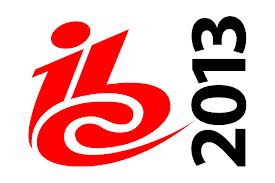
Brightcove
I met up with Albert Lai who is CTO of Media and Broadcast Solutions. He told me that Brightcove has “traditionally been a big end-to-end black box”. But that is changing as more and more requests come in for just a part of the workflow.
Brightcove has seen the Software As a Service (SaaS) model move to a Platform As a Service PaaS (platform) one, but where modularity and Flexibility have become the key criteria.
All this modularity has come about because of the very different use cases Brightcove now caters for, ranging from the Cloud transcoding services for HEVC to the Viacom native apps including the Nikelodeon one that just recently won an Emmy.
Brightcove was founded in 2004 and IPOed in February 2012. As of December 31, 2012, Brightcove had 335 employees. It is headquartered in Boston with offices in San Francisco, Seattle, New York, London, Paris, Barcelona, Singapore, Seoul, Tokyo and Sydney.
The leitmotiv of my interviews this year was 4K and Albert told me that the Cable Show 2012 was when Brightcove first started getting requests about 4K.
Brightcove has conducted internal tests on 4K content management and has concluded that it’s a very promising approach. At present it is “less a technology issue than a general marketplace one, where availability is still an issue”.
I pointed out that Cinema content was already widely available in 4K but Albert responded, “Sure cinema content is there, but its just a small amount”.
Albert sees 4K representing a 100% to 400% increase in storage and transmission costs although he thought that HEVC will alleviate some of the pain by doubling the quality within the same bandwidth and providing for a better experience. The monetization question must however be addressed, so Brightcove is listening to the market and is ready for, but not pushing 4K right now.
The Zencoder purchase of last year is probably part of that readiness campaign. Zencoder is a pure-cloud software based encoding solution for live and on-demand content.
Envivio
This year I spoke to Jean-Pierre Henot the company’s CTO based in Rennes.
I went straight to the point in asking about HEVC so Jean-Pierre first explained the main demos at the front of the booth. Three screens were showing an HD demo of live content at 24 frames per second and all looked identical. One screen was showing MPEG2 at 8 Mbps, the centre screen displayed MPEG4 at 4 Mbps and the last one was showing HEVC decoded content, currently at 3 Mbps but expect to be reduced to 2 Mbps by EOY 2014. Note that the latter still has a CPU power requirement four times greater which really is an issue in the short term.
All the demos used software encoding.
Jean-Pierre noted that the hardware decoding part of HEVC is stable already for HD content, but that for 4K HEVC decoding is still only available in beta versions as the protocol is still a bit new. Fully compliant reference designs are expected for CES 2014.
This is inline with some minor issues still pending with the specifications for HEVC transport, which is otherwise ready for HD.
Like a decade ago with MPEG4, the situation regarding royalties is still being sorted out.
We discussed the cheaper 4K sets available today and Jean-Pierre scoffed at the 30HZ limit as Envivio sees 60fps as a requirement for sport. The hardware limitation of HDMI should be gone thanks to the new 2.0 specification. This should also be available at the beginning of 2014.
All in all, Henot confirmed the general industry view that royalties, devices, frame-rates and HDMI 2.0 have been the stumbling blocks so far for 4K.
As these are gradually removed, HEVC will take off but start initially below 4K.
HEVC has no noticeable impact on ABR, which is the key enabler for many OTT services.
There seems no doubt that HEVC will be next “best solution” available for video compression and with the shorter lifecycles all round, it will take less time than MPEG4 did to penetrate market.
